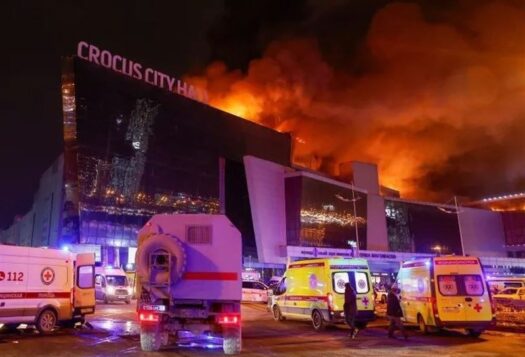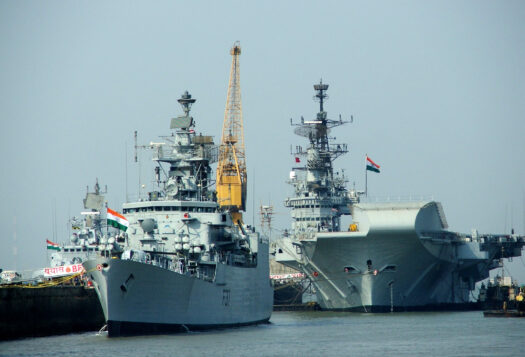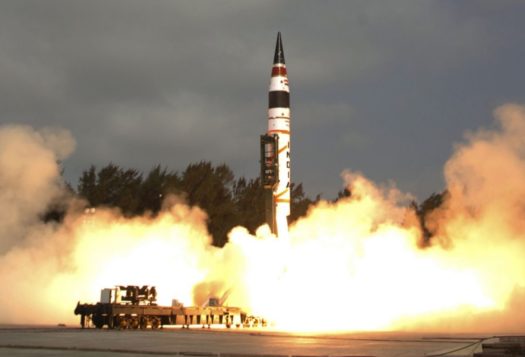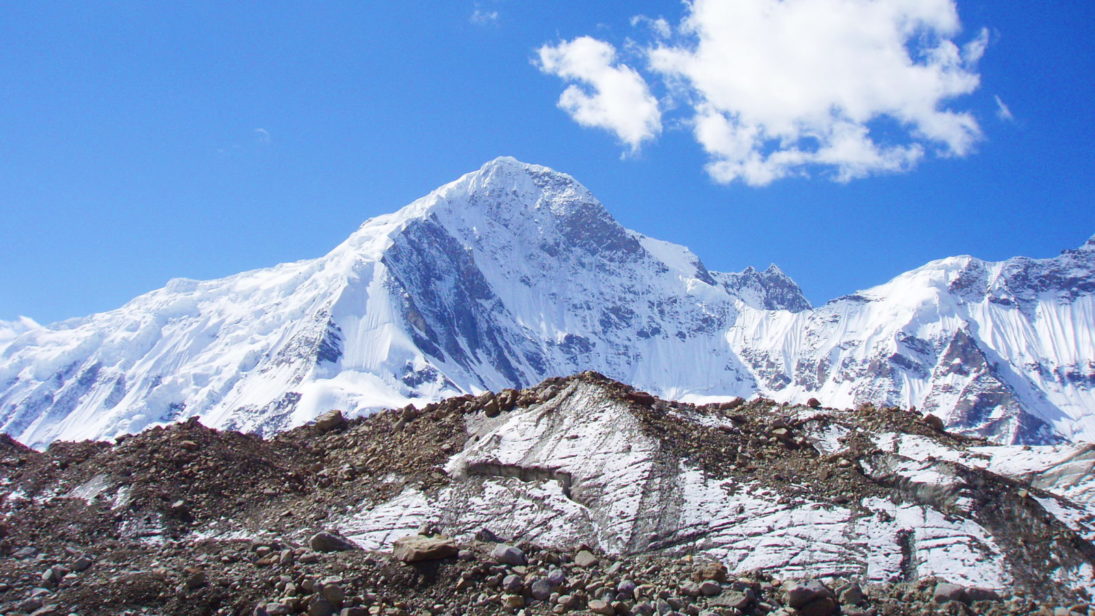
This Q&A is part of an ongoing series in which SAV talks to scholars and practitioners to understand the trends and potential inflection points in South Asian security.
In a conversation with SAV editors Emily Tallo and Akriti Vasudeva, Harinder Baweja, a journalist and editor of special projects at the Hindustan Times with three decades of experience reporting on conflict zones, relayed her experiences covering the Kargil conflict from Kashmir in 1999. She also discussed the motivations behind her book, A Soldier’s Diary: Kargil the Inside Story, and the prospects for third party mediation on the Kashmir conflict.
Can you talk about your method of reporting on Kargil? How did you go about getting the inside story of the war, and what were the obstacles you faced in doing so?
Initially I went to the war theater of Kargil to report for India Today, which is a magazine that I was working for in 1999. My book came about after I returned and after the war was over, since I came back with a lot of questions troubling me. I realized later that I came back with a lot of emotional baggage because there were all these questions haunting me all the time. I had nightmares, and I would wake up at night thinking about Kargil. When I went back that same year, the units were still there, they were busy doing their postmortems, and they were taking stock of the obstacles they faced. I think the advantage I had was that since I was already reporting in Kashmir, I already knew a lot of the units that were pushed into Kargil. They basically just pushed their nearest battalions into Kargil. That is why a lot of the men were from Kashmir. I had access, and that is a journalist’s dream. Without reach, it’s difficult to function.
If you are trusted by officers, they know that they can speak to you off the record and in confidence without being disappointed. They just showed me their files. I took copious notes and had long sessions with them. There were inquiries questioning my sources, because there are a lot of confidential stories in my book, which is why I called it “The Inside Story”. It aroused curiosity because to the common public, Kargil was a pretty war which India won, and it was the first televised war.
We were clueless of where they were coming from, we were clueless about their numbers, and we were pushing our young officers up, ill-prepared. Most units were not even acclimatized–they didn’t have the right uniform, there were short on weapons, they didn’t know the topography, and there were a confusing set of orders…There was mayhem.
I think we were found wanting onmany fronts starting with intelligence. In the beginning of the war, the thenDefense Minister George Fernandes told Parliament that they would clear theheights in 48 hours and it took close to three months. We were clueless ofwhere they were coming from, we were clueless about their numbers, and we werepushing our young officers up, ill-prepared. Most units were not evenacclimatized–they didn’t have the right uniform, there were short on weapons,they didn’t know the topography, and there were a confusing set of orders. Forinstance, one morning they were told to go in a direction, and within a fewhours they were told to come back and go in another direction. There wasmayhem. I think we lost a lot of lives because of this confusion.
I realized the extent and scope of this confusion much later, but even during the war when I was reporting for India Today, I did not stay in a hotel. I stayed with army units. Journalists were meant to clear out by five o’clock, but I was at this unit, privy to all communications. This is because they were also in the thick of it. It’s only after the ceasefire – this is what I would like to call it, I wouldn’t call it a victory – was mediated by [then-U.S. President] Bill Clinton, that they had time to do their own postmortem.
Yourreporting on the inside story of the Kargil war exposed the blunders of topmilitary leadership in India. Given that the many recommendations of the KargilReview Committee remain unimplemented, what does this mean for the likelihoodof a crisis similar to Kargil occurring again in the future?
I don’t think the enemy wouldrepeat the same kind of actions, so you may not have Kargil part two, but youwill have other attacks – and we have had these. Within a few months of Kargil,which ended in the third week of July, we had the Kandahar hijacking [inDecember 1999]. There we exchanged terrorists for the passengers and amongstthose that we exchanged was Maulana Masood Azhar, who is one of the biggestthreats to India’s security now.
I don’t think we’ve entirelylearned our lessons. Soon after Kandahar, in December 2001 parliament wasattacked and we had Mumbai attacks. Despite the fact that it is 20 years nowsince Kargil, we continue to be attacked. I don’t think we’ve put our headstogether within the security establishment to draft a cogent and cohesiveanti-terror policy. I have been covering the conflict for 30 years, and I havenot seen the semblance of a cohesive policy.
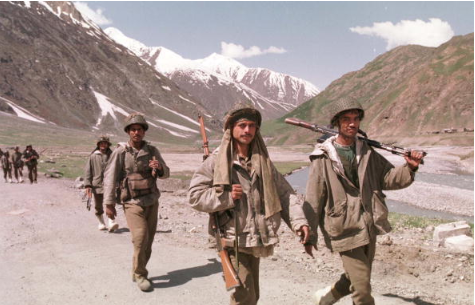
What is themost important fact or story related to Kargil that to this day remains unknownor underemphasized within the general public’s view of the war?
I think it would be notunderstanding your neighbors, not understanding the so-called enemy that you’redealing with. In the case of Kargil, there was some intelligence, I wouldn’tsay there was too much available, but there was some, including advancedinformation that came from a set of shepherds, which was ignored because wethought, “Oh no! These frigid heights, who would ever come in fromhere?” I think it’s important to open your mind. It’s important to thinkof hypothetical scenarios that might be unlikely.
In anedited volume, 26/11: Mumbai Attacked, you write convincingly on theMumbai attacks: “The investigation into the intelligence failures the precededthe Mumbai attacks reveals particularly that there was ample actionableevidence and worse, that the specific information that was available wasneither properly analyzed nor acted upon with the seriousness it ought tohave.” Has sufficient action been taken to rectify these vulnerabilities in thelong-term?
Unfortunately, I think the abilityto join the dots and make sense of the alerts that are coming in is somethingthat is missing in our security set-up. The fact that they would attempt tocome in via the sea route was also known. Shortly thereafter, we were undersiege for three days.
On paper there’s everything, we have something called the CMG, or the Crisis Management Group, which is supposed to convene within minutes. However, in practice, by the time the NSG got to Amritsar during the hijacking [of IC-814 in 1999], we saw the plane had taken off. I remember an indignant colleague of mine asking the Amritsar airport director as to why he couldn’t stop the plane. He replied, that’s like asking why Sachin Tendulkar does not score a century in every match.
I think we are very good at diplomatically flagging the fact that Pakistan is exporting terror into India…What we haven’t learned to do is secure our own camps and they continue to get attacked.
There really must be robustcounterinsurgency mechanisms in place. The lack of these is one of the reasonswhy I think, even after Mumbai, we have had so many attacks, including one inUri, after which we had the so-called surgical strikes. In hindsight now, thesurgical strikes seem to be more of a political exercise.
I think we are very good atdiplomatically flagging the fact that Pakistan is exporting terror into India.With the Pathankot terrorist attack, India proved that those terrorists werefrom the Jaish-e-Mohammad, because they used mobile phones to call the headquarters.Even Sartaj Aziz said as much, and he was the advisor on foreign affairs toNawaz Sharif.
What we haven’t learned to do issecure our own camps and they continue to get attacked. So, it might be okay topoint a finger at Pakistan, but in terms of setting your own house in order, Ithink we need to focus on that a lot better than we do.
After your Stimson Center Visiting Fellowship in 2000, you wrote on the impossibility of a bilateral resolution to Kashmir, and instead made the case for third party mediation. Do you still think this is true today?
In my paper, I’ve looked at all theagreements that have withstood the test of time and wars, and the only onesthat have withstood the test of war and time have been the ones that weremediated. I also made the argument that even though India hates the word thirdparty, it doesn’t hesitate to involve them when it suits them, like in Kargilwhen Clinton came to the rescue. I remember, in fact I went to Pakistan forthat trip when he came to Pakistan after Kargil, when he made that famousspeech about it being the most dangerous place on Earth. He said somethingelse—that you cannot hope to redraw borders with blood. This was music to NewDelhi’s ears. Informally we don’t mind international capitals coming to ourhelp. It’s just that as a formalized arrangement, India is averse to the idea.
It’s another matter that the ten years since Mumbai, we know the names of these people who were in the control room in Karachi. We have the recordings of them directing the attacks. One of the persons who was sitting that control room is now in custody. He was given back by Saudi Arabia. But the case in Pakistan has gone nowhere.
Editor’s Note: This Q&A is part of an SAV series on the enduring debates and legacies of the Kargil conflict twenty years later. Read the series here.
***
Image 1: Black Zero via Flickr
Image 2: Vijay Gupta via Getty
